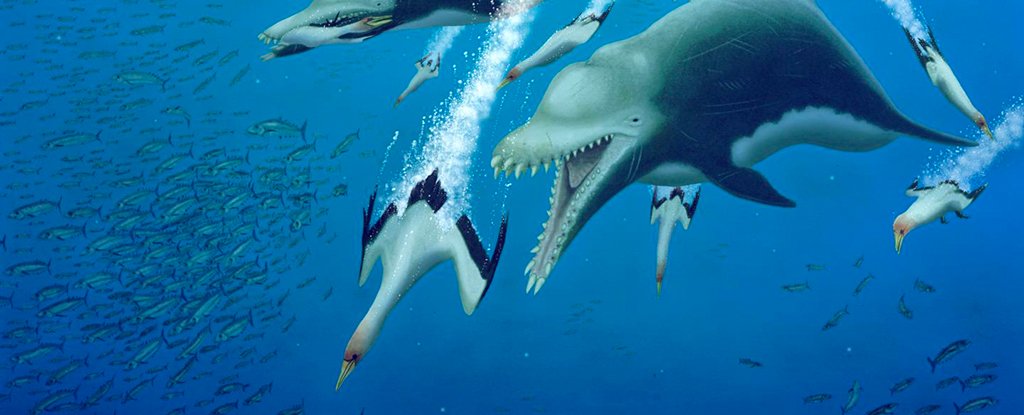
Scientists have identified an almost complete skeleton of a 4.8-meter-long dolphin ancestor that lived in what is now South Carolina during the Oligocene epoch about 25 million years ago.
This ‘dolphin’ was the first known echolocation apex predator: in addition to its large size, it would have had large, tusk-like teeth, and appears to have been able to feed and hunt at high speeds like an orca.
Importantly, the discovery could help us better understand how the two modern types of whales, toothed whales, such as dolphins and baleen whales, such as humpback whales, evolved their unique characteristics, such as fins and propulsion of the tail.
The skeleton was found in the 1990s but was initially poorly classified, and is the first almost complete Ankylorhiza tiedemani skeleton to analyze: previously the creature could only be studied from a partial rostrum, or snout, fossil, but now the cetacean can be much more understandable.
One of the main revelations is that many aspects of the skeleton (the shape of the skull and tail, the short bone of the upper arm in the fin, the shape of the teeth) suggest that the two modern types of whales, teeth and Beards evolved many of the same features in parallel independently of each other, rather than inheriting them from the same ancestor as previously thought.
This parallel evolution occurred due to the similar aquatic environments they occupied.
“The degree to which baleen whales and dolphins independently reach the same general swimming adaptations, rather than these traits evolving once in the common ancestor of both groups, surprised us,” says paleontologist Robert Boessenecker of the College of Charleston.
“It is as if the addition of additional fin bones to the fin and the elbow joint block has forced the two main groups of cetaceans to follow a similar evolutionary path in terms of locomotion.”
Although it seems obvious that animals in the same environment would develop similar characteristics, this is not a given pattern: different lineages of seals and sea lions, for example, each developed their own swimming modes and ended up with very different shapes. looking for postcranial skeletons.
The giant dolphin’s time as an ancient predator ended about 23 million years ago, when it became extinct. Since then, other whales and dolphins have taken turns, but today the only echolocation whale that is also a predator is the killer whale.
Part of what makes the new discovery so fascinating is that you wouldn’t necessarily think that the fierce killer whale and the cute, modern dolphin are so closely linked, but Ankylorhiza it probably would have fed in much the same way as the killer whale today, tens of millions of years ago.
“Whales and dolphins have a long and complicated evolutionary history, and at a glance, you may not have that impression of modern species,” says Boessenecker. “The fossil record has really opened up this long and winding evolutionary path, and fossils like Ankylorhiza helps shed light on how this happened. “
It was previously thought that whales may have inherited the ability to propel themselves using their tails and drive with their fins about 35 million years ago, Boessenecker told CNN.
Plus Ankylorhiza The fossils are awaiting study, and the researchers hope there will be many more discoveries to make.
“Because the oligocene epoch is the time when filter feeding and echolocation first evolved, and since the marine mammal locations of that era are rare around the world, fossils from Charleston offer the window more complete towards the early evolution of these groups, offering unparalleled evolutionary insight, “says Boessenecker.
The research has been published in Current biology.
.